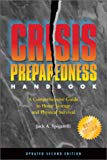Wildfire Survival
Author: Anonymous
Remove the majority of native brush within at least 30 feed from buildings. Individual plants can be left if thinned and dead portions removed. Important is wide spacing. Remove limbs up to one-third the height of plants and remove ground cover from around the base.
Grass, weeds and low-growing native plants should be mowed close to the ground. This will reduce the fire-carrying potential and offer soil stabilization.
Replace weeded areas with fire resistant plants such as Algerian Ivy, Sunrose or Carmel Creeper. This will reduce the need for annual maintenance.
Trees within the 30 foot are should be limbed up to at least 6 feet and dead limbs and foliage removed. Base vegetation should be removed to prevent a ground fire from “crowning” into the trees.
You can provide extra protection for your house with plywood coverings for sliding glass doors, windows, attic and ground vents. Cut these coverings ahead of time and store in the garage. Nail them in place when fire threatens your home. Even though you may never need them, the time, effort and small expense involved, the time, effort and small expense involved could save your home. Window screens also help to deflect heat.
Do not stack flammable materials such as firewood next to buildings. These are extremely susceptible to fire and are difficult to move when fire threatens.
Checklists
Advanced Preparation
Cut plywood covers for glass doors, windows, and vents.
Provide roof ladders and garden hoses.
Plan escape routes to places of safety for family and pets.
List all items which you with you for safekeeping.
Clear away dry grass, shrubs and leaves near buildings.
Plan procedures for last-minute protection.
Last-Minute Countdown
Place ladders against front of house.
Set lawn sprinklers on roof, connect hose and check pressure
Fill all available containers with water.
Turn off gas at meter and turn of butane tank.
Park cars headed out. Leave keys in the ignition. Close windows.
Close windows and doors in house and garage. Do not lock.
Remove lightweight curtains. Close heavy drapes and blinds.
Nail plywood covers over windows and vents.
Move lawn furniture indoors. Pull combustible furniture away from windows.
Turn on lights in house, porch, garage and yard.
Evacuate family and pets to safe location.
If Fire Theatens Outside
Connect garden hoses; check water pressure, using as little water in the process as possible.
Seal up attic and ground vents with pre-cut plywood.
Remove containers of combustible trash from the area, or place metal covers over them.
If you have a butane tank, clear the area around it and turn off the butane.
Remove leaves from yard and gutters.
Tear down light wooden screens or patios which are connected to the house or garage, and place combustible patio furniture in garage or house.
Remove flammable material as far from buildings and cars as possible.
Set a lawn sprinkler on the roof. It will be more effective than a hose. Caution: Do not turn on the water ahead of time, as the shingles will dry quickly and you will have wasted water. A garden hose may pour out five gallons of water or more per minute, so do not open the faucet until you see flying brands falling on the roof.
Place all available ladders against the street side of the house so that anyone who stops to help can see them.
Inside
Close all windows in you house and all doors but do not lock them. If firemen arrive to help save your home they may need instance access.
Close all doors inside as well, to block off circulation of air and movement of fire from room to room.
Remove lightweight curtains from windows, as they may ignite from heat radiation. However, heavily-lined drapes or venetian blinds pulled across windows will help to keep out heat and possibly prevent combustion of furnishing. In fact, move overstuffed furniture away from windows and sliding glass doors and in the center of the house.
Fill bathtub with water, also all sinks, buckets, large kettles, trash containers-anything that will hold water. You may have to draw water even from the water header or the tank from behind the toilet bowl. This storage of water is a safeguard if pressure is reduced in the water main from heavy use by your neighbors or fire suppression crews.
Turn on all lights in the house, on the porch, in the garage and in the yard. This will enable firefighters to spot your property at night.
Gather up your pets so you do not have to run around at the last minute looking for them.
Shut off gas at the meter. No need for pilot lights to provide additional ignition sources. After the fire danger is past, the gas company will re-service your gas appliances.
Keep your radio tuned to a local station for reports and evacuation information. Contact a friend or relative for housing for you and your family in case it is necessary to leave your home.
Your Car
Park your car in the garage headed out for a quick getaway, if needed.
Leave keys in the ignition.
Close garage door but leave it unlocked.
If you lack garage space, park vehicles in the direction of escape.
Close all windows so airborne sparks and embers cannot enter and ignite the upholstery.
Fighting the Fire
If law enforcement and fire authorities permit and it is safe to do so, it is a wise plan for an able-bodied member of the house to remain to protect the house in the absence of firefighters or to assist firefighters when they arrive. If the fire cannot be stopped and passes over your home, the safest place for protection is inside the house with all doors closed. You may turn on the hose but no water gushes out. Pressure in the line has been lowered by fire suppression crews working on burning homes in your neighborhood. this is when you start carrying water from the tub-buckets, kettles-and hot water tank. A quart of water on a little spark can save a whole house.
After the Fire Passes
Immediately afterward, check for hot spots using eyes and hose to find whiffs of spirals of smoke. Check on all furniture, cupboards, bedding, storage areas, drapes, closets, from attic to garage and all roof surfaces. Once over is not enough. Continue checking for at least six to ten hours after a fire is thought to be out. The key to being your own successful firefighter is advance preparation. Plan procedures and provide necessary equipment ahead of time, and give yourself and your home a fighting chance should you need it. 
VN:F [1.9.22_1171]
Rating: 0.0/10 (0 votes cast)
![]()


